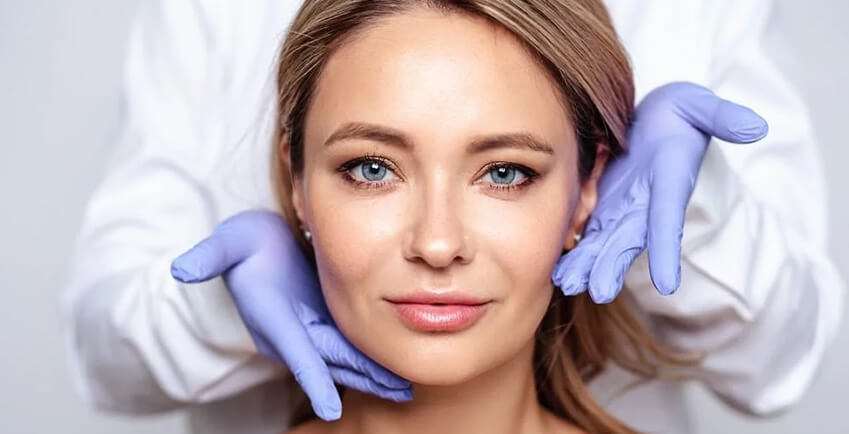When patients walk into my clinic asking about fillers, one of the first questions they ask is, “Doctor, is it safe?”
It’s a valid question. After all, this isn’t about buying a new handbag or trying a new haircut — it’s about your face, your identity, and how the world sees you. Imagine lending your favorite car to someone. Would you give it to a stranger who doesn’t know how to drive? Probably not. The same logic applies when we talk about injectables. The face is a Ferrari, not a scooter — it needs a skilled driver.
Let’s dive into the safety of fillers, especially hyaluronic acid (HA) fillers, and why choosing the right hands — preferably a board-certified plastic surgeon — matters more than the filler itself.
- Are Fillers Safe?
Think of fillers as scaffolding. When a building loses its structure over time, we don’t rebuild it entirely — we add supportive beams where needed. Fillers do the same for our faces: they restore volume, soften lines, and highlight features.
Now, the good news: modern fillers, particularly hyaluronic acid-based ones, are generally very safe. Hyaluronic acid is a substance already found in our skin, eyes, and joints. Your body recognizes it, welcomes it, and eventually breaks it down naturally. In fact, HA fillers come with a “safety net” — if for any reason you don’t like the result or a complication arises, we can dissolve them using an enzyme called hyaluronidase. It’s almost like having an “undo” button.
But — and here’s the important part — safety isn’t just about the material. It’s about the person holding the syringe.
- Why Who Does It Matters More Than What Is Used
Imagine two chefs using the same ingredients. One creates a Michelin-star dish, the other
burns the pan. The fillers themselves are the ingredients; the injector is the chef.
The human face has highways of blood vessels, nerves, and delicate structures. There are “danger zones” where one wrong prick can lead to complications like vascular occlusion, tissue damage, or even vision loss. A plastic surgeon doesn’t just know where to put the filler — we know where not to. That knowledge comes from years of training in anatomy, surgery, and reconstruction.
So, while fillers are safe in principle, they become safest in the hands of someone who knows the map of the face like the back of their hand.
- How Safe Are Hyaluronic Acid Fillers?
Among all filler types, hyaluronic acid fillers have the best safety profile. Think of them as the biodegradable, eco-friendly option. If calcium hydroxylapatite fillers are like concrete, HA fillers are like water-based clay — flexible, reversible, and forgiving.
Most side effects of HA fillers are temporary and mild: a bit of swelling, redness, or bruising, much like what happens after bumping your arm on a table. Rarely, more serious issues like lumps, infection, or blocked blood vessels can occur — and that’s where expertise makes all the difference.
The real danger isn’t the filler itself; it’s when someone without deep anatomical knowledge injects it blindly.
- Lip Fillers: Safety with Precision
Lip fillers are one of the most requested treatments, and also one of the most feared. Patients often say, “I don’t want to look like a duck.”
The truth is, natural-looking lips are completely achievable when done with finesse. The lips, however, are not just cushions of skin; they’re packed with blood vessels. An untrained injector may chase symmetry and end up compromising blood supply.
When done properly, lip fillers are safe, subtle, and beautiful. It’s like adding air to a balloon just enough to make it look smooth, not so much that it bursts.
- Under-Eye Fillers: The Most Delicate of All
If lip fillers are a tightrope walk, under-eye fillers are walking that rope blindfolded. The under-eye area is thin, unforgiving, and prone to showing irregularities. Patients want to get rid of hollow “tired eyes,” but if filler is placed incorrectly, it can lead to puffiness, bluish discoloration (the Tyndall effect), or even worse, vascular complications.
This is where training and restraint matter. Sometimes, the safest option isn’t injecting at all — it’s telling the patient that surgery or skincare may serve them better. A plastic surgeon has the judgment to make that call.
- The Importance of Honest Conversations
Before I pick up a syringe, I always sit down with my patients and talk. Not just about what they want, but about what’s realistic, what’s safe, and what the journey will look like.
I often compare fillers to planting a tree. The first injection is like planting the seed — you won’t see a towering oak overnight. It takes maintenance, touch-ups, and care over time. Fillers don’t last forever; most HA fillers last 6–18 months depending on the product and area. That’s not a flaw — it’s a feature. Just like fashion, our faces and preferences evolve. Temporary fillers give us flexibility to adapt.
Aftercare is equally important. I tell patients, “You wouldn’t buy a white shirt and then eat spaghetti in it without a napkin.” Similarly, after fillers, you need to avoid vigorous rubbing, strenuous exercise for a day, and follow guidelines to minimize swelling and bruising.
- Why Safety = Science + Art + Communication
Fillers are not just syringes of gel — they’re a blend of science, art, and communication.
Science ensures we respect anatomy and safety.
Art ensures we enhance your beauty without changing your identity.
Communication ensures your expectations and reality align.
When all three come together, fillers are not just safe — they’re transformative in the best way.
- Final Thoughts
So, how safe are fillers? The honest answer: very safe when done by the right hands, with the right material, and with the right expectations. They are as safe as driving on a highway — if you have a skilled driver, follow the rules, and don’t over speed, you’ll reach your destination smoothly.
If you’re considering fillers, remember this: the syringe doesn’t make the outcome safe. The person behind it does. A board-certified plastic surgeon brings not just skill but also judgment, artistry, and the ability to handle complications if they arise.
Fillers aren’t about looking different. They’re about looking like the best version of you — refreshed, rested, and confident. And when done safely, that’s exactly what they deliver.
Dr.Yash Thakkar
Mob: 7447433723
IAAPS: 2024/GJ/51
Mail: dr.yashthakkar.plasticsurgery@gmail.com
Disclaimer : The opinions here are personal views of the authors. IAAPS is not responsible. All members may not have the same scientific view point

